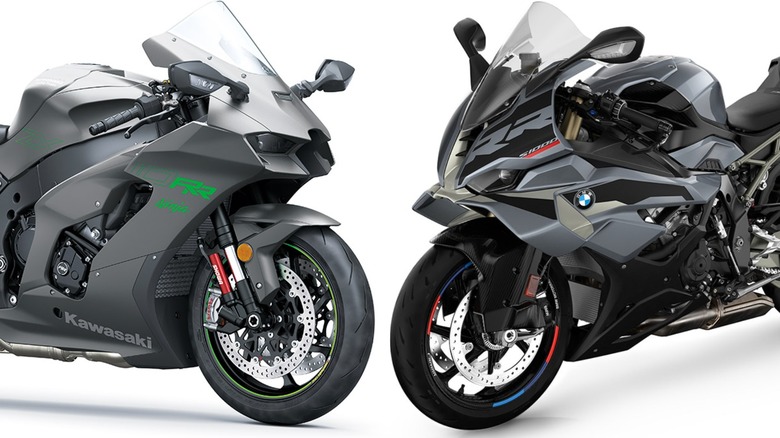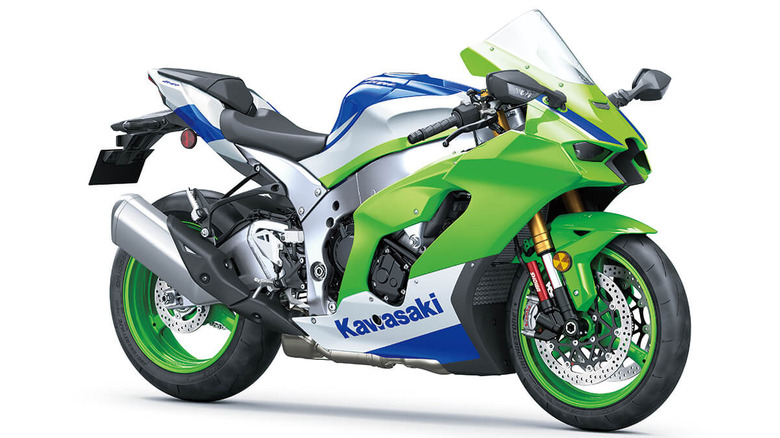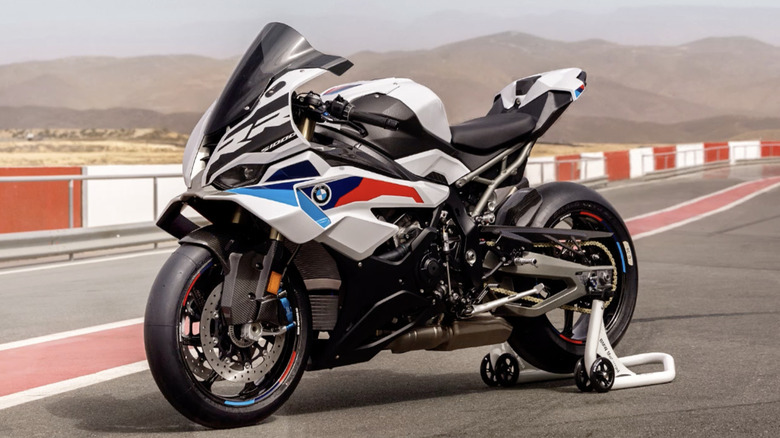BMW S 1000 RR Vs Kawasaki ZX-10R: Which Is Faster & How Do Their Specs Compare?
Able to rocket around racetracks at insane speeds, high-horsepower motorcycles are amongst some of the fastest and most thrilling vehicles on the planet. And in the high-performance motorcycle world, two of the most respected names are BMW and Kawasaki. For average, everyday riding, both manufacturers make a wide variety of bikes that cover a range of riding scenarios like cruising, sport touring, and adventure bikes. But both manufacturers also make high-horsepower superbikes that are in a constant battle for supremacy — offering all the two-wheeled thrills you can handle.
BMW's flagship sport bike, the S 1000 RR. Without going into their ultra-high-performance lineup of M motorcycles, it's the most performance you can get with a BMW sport bike. Kawasaki offers sport bikes with more displacement like the ZX-14R and supercharged speed monsters like the H2, but the most direct competitor they've got for the S 1000 RR is the Ninja ZX-10R.
The standard Ninja ZX-10R has 196 horsepower and 83.9 lb-ft of torque — an impressive amount for any two-wheeled machine and average amongst supersport bikes. Like many of the world's fastest bikes, and several of the fastest Kawasaki's ever built, the ZX-10R is limited to 186 mph. The S 1000 RR pushes its way past the Kawasaki, though, offering 205 hp and 83 lb-ft. BMW lists the top speed for the S 1000 RR at a blistering 188 mph. It might be a small difference, but the BMW is the more powerful bike, and it's faster at the limit.
What about the rest of the specs?
As you might expect from two bikes in this class, things are close, but it's impressive just how evenly matched the spec sheets are. Seat height is nearly a deadlock, with the BMW's seat sitting at 32.7 inches high and the Kawi's measuring 32.9. Most average-height adults should be able to swing a leg over the seat just fine. Wheelbase is almost identical between the two bikes (57.1 inches on the Kawi, 57.3 on the BMW) and you could swap tires between the two bikes if you really wanted — like many supersport bikes they both use 120/70/R17 front tires and 190/55/R17 rears.
Even though both of these bikes use four-cylinder engines, there are some differences between them. The Kawasaki's engine is 998cc, while the BMW is almost exactly the same at 999cc. Bore and stroke, however, are not the same. The Kawasaki measures 76.0 x 55.0 millimeters, while the BMW sits at 80 x 49.7 millimeters. Thismeans the BMW's cylinders have a wider diameter, but the pistons travel a shorter distance inside the engine. The claimed curb weight for the ZX-10R is 456 pounds (with the optional ABS) while the S 1000 RR is slightly lighter at 437 pounds. No matter which one of these supersport/liter bikes you go with, you'll be getting a lot of power in a package that's relatively lightweight.
How much do they cost and what do you get for the money?
With all their spec similarities, it's reasonable to think these bikes are similarly priced, and you'd be right to make that assumption. For a Ninja ZX-10R with ABS, the MSRP is $19,614 (including $815 destination fee). Meanwhile, base MSRP for the BMW S 1000 RR is $19,690 (including $695 destination fee). The BMW offers a slightly larger TFT screen (6.5 inches vs. 4.3 inches with the Kawasaki), but tech features are broadly similar across the two bikes. Both offer launch control modes, power control modes, traction control, and quick shifters. The Ninja ZX-10R comes with a 12-month warranty, but the S 1000 RR has it beat in a big way, offering a three-year/36,000-mile warranty.
With both the Kawasaki and the Ninja, there are lots of available upgrades, including track-ready versions of both bikes. The Kawasaki is available as the ZX-10RR with features like Pirelli Diablo tires, forged wheels, titanium connecting rods, lightweight pistons, an upgraded intake, and changes to suspension tuning for a more race-ready vibe. The price of the ZX-10RR, however, balloons to over $30k. The BMW can be optioned up in a hurry too, with the M Package which includes unique brake calipers and carbon wheels (an extra $4,995), or you can skip straight to the track-dedicated M 1000 RR. Prices aren't official on the M 1000 RR yet, but we expect it to be a pretty expensive bike given its serious performance chops.


